#pp hugo
Text
IDK if room 301 was intended to have any real significance, perhaps not. But, headcanon from a fic that I'm uncertain if I'll finish: Rose used to hide in that bathroom from Hugo, prior to and after she had Jimmy, presumably they lived in a proprietor's suite (maybe G floor? We see Rose duck and hide in the one near the kitchen, anyway) and so floor 3 is conceivably the furthest place from where Hugo would be and safest from his abuse. Given that Rose also lived in the hotel and he was her boss, I'd assume it wasn't really an option to leave the building and so she'd just lock herself and Jimmy up and away. And now the bathroom exudes fear and memories of being abused and beaten, which Maya.. experiences
#txt#headcanons#rose#hugo#tw abuse#additionally. headcanon that she had pp d and was having a horrendous time with the guilt of that plus the abuse#jimmy being the best thing that ever happened to her & the light of her life but also wishing he had never been born for his own sake#multitudes yk. that and yall know my headcanon about rose being young w him. the realisation that her entire future is gone and she's stuck#shes a mother first and she never gets to leave no matter how many suitcases she packs send HELP#after harvey settles he takes the proprietor's suite. rose shifts about but once she settles back there she re does the whole decor
8 notes
·
View notes
Text
Watching Fear & Hunger 2 challenge streamers is fun because the streamer's accent is never an American one.
#[thick italian accent] i dont think i censored father hugo's pp... but that's a problem for the future#paska
4 notes
·
View notes
Text
“That one never sleeps” — Napoleon mentioned in John Quincy Adams’ diary

Pictured: The Elephant of the Bastille. Commissioned by Napoleon. It was supposed to be made of bronze, but only a plaster full-scale model was built.
Between diplomatic appointments, John Quincy Adams met his wife and son in Paris. He was at leisure, passing time as he wrote in his diary “as agreeably as any part of my life.” By happenstance, the visit of Adams coincided with the return of Napoleon from Elba, called the Hundred Days, which ended with his defeat at Waterloo. In his diary entry of March 28, 1815, Adams mentions a chat with the doorkeeper of the elephant, who told him that 200 men once worked on the job, but now, under Louis XVIII (the restored Bourbon monarch), only 7 or 8. With Napoleon’s return, said the doorkeeper, work on the fountain would resume “because that one doesn’t sleep” (car celui-là ne dort pas). The artist was unable to persuade the government, when the monarchy returned, that the elephant had naught to do with Bonaparte. It figures in Victor Hugo’s masterpiece Les Misérables when a ruthless crook occupies it and, showing a loving heart, shelters a street urchin. The basin remains today.
— Aaron Burr in Exile: A Pariah in Paris, 1810-1811, by Jane Merrill and John Endicott, pp. 99
—————
Adams’ diary entry, date: 28 March 1815
We rode round upon the Boulevards to the Porte St. Antoine; and visited the works, at the Canal de l’Oureq and the colossal Elephant to be erected in Bronze, for a public fountain on the spot where the Bastille formerly stood— The model in clay is under a shed—it is 55 feet high, and 45 feet long— In a separate chamber, shewn to us by the door keeper, as a special favour, there is a small model in clay, marked out in pieces, as the great bronze original work is to be cast— He told us that there had been formerly two hundred workmen constantly employed upon it— That while the king was here, it was almost abandoned—not more than seven or eight men kept at work. Now it would be resumed Car celui la ne dort pas, and in two years the work would be completed.
(John Quincy Adams Digital Diary)
#John Quincy Adams#Adams#napoleon#napoleonic era#napoleonic#napoleon bonaparte#the hundred days#hundred days#Paris#Aaron Burr in Exile: A Pariah in Paris 1810-1811#Aaron Burr#first french empire#french empire#Victor Hugo#les mis#Les Misérables#Elephant of the Bastille#Bastille#france#19th century#history#1800s#french revolution#napoleonic paris#Napoleon’s reforms#Napoleonic reforms#reforms
20 notes
·
View notes
Note
hi there! I was wondering if I could pick your brain re: accents in the fowlverse because I adore reading your analyses and thoughts so I’m curious to see what you think! Artemis 1 and 2 I’m assuming have a Dublin accent (forgive me Irish fans I’m not familiar with Irish accents!), but what about butler and Juliet for example? And holly and opal and other fairies, while of course they can speak any language they’d like, do you think they adopt an accent that fits their language of choice, or is there a “fairy” accent they have?
Hi there! I have a few thoughts on this, though I will ask that you take them with a grain of salt due to being an American, lol.
The Irishness of the books is a subject on which people have written much more intelligently than I ever could. The first AF book was published in 2001, which I note here due to economic context. The "Celtic Tiger" refers to the rapid economic growth in Ireland from the mid-1990s to the late 2000s.

O’Leary, Eoin. “Reflecting on the ‘Celtic Tiger’: Before, during and After.” Irish Economic and Social History, vol. 38, 2011, pp. 73–88. JSTOR, http://www.jstor.org/stable/24338906. Accessed 2 Aug. 2023.
During this period of economic growth (which one must note was characterized by high technology exports), there was a boom in internationally successful Irish children's and young adult fiction. These books usually harkened back to pre-colonial mythology while incorporating high-tech themes connected to economic optimism for Ireland's future.
The 2011 essay collection edited by Keith O'Sullivan and Valerie Coghlan, Irish Children’s Literature and Culture: New Perspectives on Contemporary Writing, analyzes the historical context behind these trends in youth fiction.
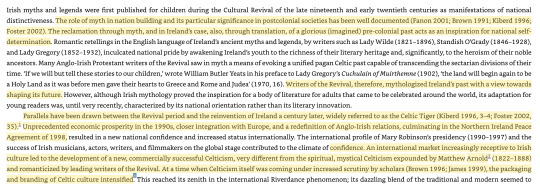

O’Sullivan, Keith, and Valerie Coghlan. Irish Children’s Literature and Culture: New Perspectives on Contemporary Writing. 2011. Routledge.
Of the Irish children's fiction and YA published from 1995-2005, Colfer's Artemis Fowl series remains one of the most internationally popular. In looking at these books' success, Patricia Kennon interrogates the particular Irishness of AF in her essay, "Contemplating Otherness Imagining the Future in Speculative Fiction".
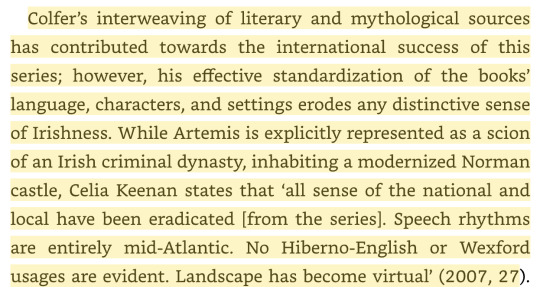
O’Sullivan, Keith, and Valerie Coghlan. Irish Children’s Literature and Culture: New Perspectives on Contemporary Writing. 2011. Routledge.
The first book establishes some interesting elements of the Fowls' class. When describing the relationship between the Butlers and the Fowls, we learn, “The first record of this unusual arrangement was when Virgil Butler had been contracted as servant, bodyguard, and cook to Lord Hugo de Folé for one of the first great Norman crusades"; the Fowls and Butlers arrive in Ireland as Anglo-Norman conquerors.
One other note we have about the Butlers and Fowls is that: “The original Fowl castle had been built by Aodhán Fowl in the fifteenth century overlooking low-lying country on all sides.” The fifteenth century saw the reconquest of Ireland under Henry VIII; Ireland was changed from a lordship (where the island was ruled by the King of England and controlled by loyal Anglo-Norman lords between 1171-1542) to a full Kingdom. Furthermore, with this excerpt about Aodhán Fowl, we must note that the Manor was built in Dublin. During the 15th century, Dublin was located in the Pale.

From Wikimedia
The Pale was located around and in Dublin, and it was the base of English rule in Ireland following the reconquest. By the Tudor period, there was intermarriage between the Gaelic Irish aristocracy and the Anglo-Norman lords, and many of the Anglo-Normans had become "Gaelicized"; descendants of the Anglo-Norman colonists were seen as assimilated into Irish culture and increasingly less "English" by the end of the Middle Ages. These descendants were seen as the "Old English" of Ireland, in contrast to the "New English" of Ireland of the Tudor invasion. One should note that in the case of the Pale, it remained subject to the English king during the 15th century when other parts of Ireland were predominantly under the rule of native Irish lords or Anglo-Irish lords (who, in theory, answered to the king). One should also note that the Pale was comprised of Old English merchants who were loyal to England. Thus, there is a specificity to the time in which Aodhán Fowl lived and built the Manor.
Based on the aforementioned bits of lore and historical context, we have to understand the Fowls as having their wealth and power tied to the class position they enjoyed historically due to being descendants of Anglo-Norman invaders, as well as being "Old English" during the reconquest. The Fowls are undoubtedly Irish -- Colfer positions Artemis and his family as nothing but -- yet they hold the power they do as a result of having at one point been Anglo-Norman (whose descendants "Gaelicized").
As such, IMO the Fowls wouldn't have a location-based accent per se, but rather an education-based accent that is posh, RP-style with a tinge of Dublin. FWIW, some Dublin accents already are received as posh, like the D4 accent. With the Butlers, I think that they'd have a similar accent to the Fowls due to being of a similar class. However, their training would likely lend them the ability to affect an accent that is "local" to wherever they are stationed.
Honestly, I have no idea on accents for the People! I would assume that there is a "Haven" accent, though when it comes to the gift of tongues, I am open to ideas as to how that would affect speech.
Also, I would love to hear any thoughts/additions you may have :)!
63 notes
·
View notes
Text

Ágota Kristóf, L'Analphabète. Récit autobiographique, Éditions ZOE, 2004




«Leggo. È come una malattia. Leggo tutto ciò che mi capita sottomano, sotto gli occhi: giornali, libri di testo, manifesti, pezzi di carta trovati per strada, ricette di cucina, libri per bambini. Tutto ciò che è a caratteri di stampa. Ho quattro anni.
[…]
So leggere, so di nuovo leggere. Posso leggere Victor Hugo, Rousseau, Voltaire, Sartre, Camus, Michaux, Francis Ponge, Sade, tutto quello che voglio leggere di francese, e anche gli autori non francesi ma tradotti, Faulkner, Steinbeck, Hemingway. Il mondo è pieno di libri, di libri finalmente comprensibili, anche per me.
[…]
In seguito avrò ancora due figli. […] Quando mi chiedono il significato di una parola, o la sua ortografia, non dico mai "Non lo so". Dico: "Vado a vedere". E vado a vedere nel dizionario, senza stancarmi mai. Divento un'appassionata di dizionari.»
– Ágota Kristóf, (2004), L'analfabeta. Racconto autobiografico, Translation by Letizia Bolzani, «Scrittori», Edizioni Casagrande, Bellinzona, 2011, pp. 7 and 49-50
Cover Art: Ágota Kristóf (5 years old) photographed in Csikvánd, 1940
10 notes
·
View notes
Text
Victor Hugo’s Four Archetypes: analysis & overview
Victor Hugo’s 1862 novel Les Misérables is a portrait of humanity in early-mid 19th century France. Through visceral depictions of life amidst the middle and lower classes, poverty and mistreatment, Hugo paints a distinct yet widely applicable and truthful image of what it means to be alive in the world, both as an individual and in relationship and community with others. Though Les Misérables (here on referred to as “Les Mis”) is a fiction novel and the characters therein are not real people, the way Hugo writes about them is extremely true to life and offers insightful understanding of human nature and different personalities. Most notably in this context are four character types that Hugo uses to introduce a secondary set of characters halfway through the novel.
Les Mis contains a great many characters, as it is a novel that spans several decades and locations. The primary protagonist is, of course, Jean Valjean, the escaped convict with a heart of gold. Largely, the story overall follows Valjean throughout his life and growth and struggles. Around the halfway point of the book, however, we are introduced to Les Amis de l’ABC — the Friends of the ABC, a small group of college students of the middle and lower class who have a desire for revolution and change. They wish to follow in the footsteps of the previous great French Revolution of 1789 and the more recent July Revolution in 1830. Their idealism later leads to the sparking of 1832’s June Rebellion — a real historical event, which in fact was what initially prompted Victor Hugo to write Les Misérables — and the deaths of all but one member of their number. They are named, in their introductory chapter, as “a Group Which Barely Missed Becoming Historic” in a pre-emptive reference to the futility and destruction of their hopeful efforts.
In introducing these characters, Hugo also brings into play a set of very vivid descriptions for them. He takes time to introduce each individual member of the group, and in doing so also points out four key players. These four characters, as Hugo presents them to his readers, hold the archetypal placements that this writer will be exploring in this essay. They are, in introduction, the Chief, the Guide, the Center, and the Skeptic. These four delineations of character types describe both the personalities and the narrative functions of the characters that fit them, both the original characters in Les Mis and characters throughout other books, films, and other media.
The first of these archetypal characters in Les Mis is Enjolras, the leader of Les Amis de l’ABC and true spark that lights the students’ revolution. As such, Hugo takes an extra length of time to fully describe him, appearance and attitude. Enjolras is described as full of youthful vigor, with golden hair and face so beautiful as to be almost feminine. He is fiery, yet cold — his passionate fervor for his cause contrasted with the chilly, detached way he often interacts with those around him. Though not all of this is relevant to discussion of archetypes, quite a lot of it remains important, as this character is the basis of reference for the archetype of the Chief.
Enjolras was a charming young man, capable of being terrible. […] A pontifical and warlike nature, a singular thing in a youth. He was an officiating priest and a man of war; from the immediate point of view, a soldier of the democracy; above the contemporary movement, the priest of the ideal. […] He had but one passion — the right; but one thought — to overthrow the obstacle. […] He was the marble lover of liberty. His speech was harshly inspired, and had the thrill of a hymn. He was subject to unexpected outbursts of soul. (Hugo, Les Misérables, pp 575-576. Tr. Isabel Hapgood.)
The Chief, as a character in this narrative, is the fiercely goal-oriented leader. The key points, both for Enjolras himself within Les Mis and for the generalization of the personality of the Chief, are these: “[Enjolras] was a charming young man, capable of being terrible,” and “He was the marble lover of liberty”. These two lines, brief in comparison to much of Hugo’s writing, give a more concise picture of the personality traits of the Chief: they are intent on their cause, the things they believe in, to the point of becoming ruthless if brought to it. They can be someone who seems above, strange, outside of normal relational interactions. Their dedication to their chosen cause can give them an air of coldness or distance, the “marble” that Hugo describes Enjolras as.
There is, of course, much more to a person than simply those aspects of dedication and distance; even within Les Mis, Enjolras becomes must more humanized and grounded over the course of the time readers are given to learn more about him. However, he is the original Chief character type: goal-driven, passionate, unpredictable in his actions but still utterly predictable in his beliefs. The Chief is someone who can be easily understood with an understanding of what cause they have given themselves to.their dedication and fervor is singleminded; other things may often become trivial to them in lieu of giving their whole self over to their mission.
Beside the Chief, bolstering them and balancing them with beliefs just as strong, but more softly held, is the Guide. In Les Mis, steadying and standing amongst the others in this role, is Combeferre.
By the side of Enjolras, who represented the logic of the Revolution, Combeferre represented its philosophy. Between the logic of the Revolution and its philosophy, there exists this difference — that its logic may end in war, whereas its philosophy can end only in peace. […] He [Combeferre] was less lofty, but broader [than Enjolras]. He desires to pour into all minds the extensive principles of general ideas. He said, “Revolution, but civilization.”; and around the mountain peak he opened out a vast view of the blue sky. […] He loved the word “citizen,” but he preferred the word “man”. He […] affirmed nothing, not even miracles; denied nothing, not even ghosts; […] Enjolras was a chief, Combeferre was a guide. One would have liked to fight under the one and to march behind the other. (Hugo, Les Misérables, pp 576-577. Tr. Isabel Hapgood.)
The Guide, often a counterpart to the Chief, reflects belief in a more grounded way; they are far more compassionate and connected to their fellow man. The Guide is willing to fight, if need be, but would rather affect change via the individual man as opposed to in battle. The description of Combeferre, “Around the mountain peak he opened out a vast view of the blue sky,” is essential; the Guide, by their nature, wishes to offer the views of their beliefs to others, to give a chance to see the world differently and to show them the way the world could, no matter what the world currently looks like. The Chief is by nature a visionary, but the Guide may be more so in that their fight is more that of ideaologies than with other people. Their fight is not with those who oppose them so much as it is for humanity in general. The Guide is a softer side to the Chief; this is why often these two character types operate as a pair.
The next personality type is called the Center — a relational cornerstone, or centerpiece as their title implies. In the case of Les Amis de l’ABC, this is Courfeyrac.
Courfeyrac had, in fact, that animation of youth that might be called the beaute du diable of the mind. Later on, this disappears like the playfulness of the kitten, and all this grace ends. […] This sort of wit is transmitted from generation to generation. […] Courfeyrac was a honorable fellow […] [He was] a paladin. Enjolras was the chief, Combeferre was the guide, Courfeyrac was the center. The others gave more light, he shed more warmth; the truth is, that he possessed all the qualities of a center, roundness and radiance. (Hugo, Les Misérables, p 580. Tr. Isabel Hapgood.)
Hugo’s introduction to Courfeyrac hinges largely on comparing him to a character who had come and gone chapters earlier. Felix Tholomyes was described with a cheerful, attractive personality that draws people to him. However, Tholomyes was a cheat and a scoundrel, whereas Courfeyrac, though similar in personality and aura, is “An honorable fellow… a paladin”. Courfeyrac is the Center, the warm, friendly glue that holds the group together.
The Center is defined well by their title: they are the one who most everyone is drawn to, who has individual relationships but binds them all to each other all the same. Because of their warmth and welcoming, the Center rallies a group together by virtue of friendliness. A paladin is “A defender or advocate of a noble cause; a defender of faith” (American Heritage dictionary, 5th edition). The Center’s noble nature acts as an interpersonal glue holding those around them close both to the Center themselves, and to each other. They are a unifying force.
The fourth archetype that Hugo frames out in Les Mis is the Skeptic. The Skeptic is something of a wild card, an opposing force who nonetheless attaches themselves to those they may disagree with. In Les Mis, this character type is represented by Grantaire, a cynical drunkard.
Among all these glowing hearts and thoroughly convinced minds, there was one skeptic. How came he here? Bu juxtaposition. […] Grantaire was a man who took good care not to believe in anything. […] Skepticism, that caries* of intelligence, had not left him a single whole idea. He lived with irony. This was his axiom: “There is but one certainty, my full glass.” He sneered at all devotion in all parties.[…] However, this skeptic had one fanaticism. This fanaticism was neither a dogma, not an idea, nor an art, nor a science; it was a man; Enjolras. […] To whom did this anarchical scoffer unite himself in this phalanx of absolute minds? To the most absolute. In what manner had Enjolras subjugated him? By his ideas? No. By his character. A phenomenon which is often observable. A skeptic who adheres to a believer is as simple as the law of complimentary colors. That which we lack attracts us. No one loves the light like the blind man. The dwarf adores the drum major. The toad always has his eyes fixed on heaven. Why? In order to watch the bird in its flight. […] He admired his opposite by instinct. […] He was, himself, moreover, composed of two elements, which were, to all appearance, incompatible. He was ironical and cordial. His indifference loved. His mind could get along without belief, but his heart could not get along without friendship. A profound contradiction; for an affection is a conviction. […] …he was the obverse of Enjolras. (Hugo, Les Misérables, pp 583-584. Tr. Isabel Hapgood.)
*Caries: Ulceration of bone; a process which bone disintegrates and is carried away piecemeal, as distinguished from necrosis, in which it dies in masses. (American Heritage Dictionary of the English Language, 5th edition)
The Skeptic, as a character type, is a cynic, a fatalist. They are often, as Hugo’s original text says, found in juxtaposition — not only in the way they challenge and counterbalance others, but also within themselves. The Skeptic is, as Hugo says of Grantaire in regards to Enjolras, the verso of the Chief: they are the flipside, if, instead of how the Chief dedicates themself to their cause and beliefs, they dedicate themself with equal force to the pursuit of a lack of belief. This, the interest of holding no belief, is incongruously a cause in and of itself. They are the opposite of the Chief, of believers, but strangely similar — Hugo refers to Grantaire as “Enjolras’ one true satellite”. The Skeptic’s perspective on the world tends to be darker, more pessimistic — what they themselves might call “realistic,” if asked — but they are likely to surround themselves with those bright, radiant people whose faith soars. “A skeptic who adheres to a believer is as simple as the law of complimentary colors” — they mirror the faith of others, in a warped way, with their insistence on disbelief; they have a need to be surrounded by those with differing views simply because they require someone to bolster them.
By nature of their skepticism, they are drawn to true believers. They challenge and are challenged all the same, and that is what fuels them. Surprisingly, considering their opposition and argumentative attitude, the Skeptic often brings a kind of balance to their narrative. Not all Skeptics are as viciously cynical, however — the character type is simply one with the pessimistic, differing views that offset them from most others. They hold onto their claimed skepticism as tightly as the Chief holds to their mission or cause, though this determination often leads into a kind of faith of their own; they believe they need no belief, but human nature in Creation dictates that they still do, and this often becomes a kind of relentless devotion not to a belief or a quest, but to one individual person. If a Skeptic type gives their loyalty (devotion) to someone, it is absolute and complete, and can sometimes be almost obsessive.
The key affect of these four archetypes is that, unlike other archetyping formats, they are focused on how characters interact with the world and with others, differing from the way Jung’s 12 types are solely based in the individual themself. Hugo’s archetypes deal far more in interpersonal relations than do most other systems. Though likely not intended as a metric for external literary analysis, these four archetypes are a much more relational perspective on what makes a character who they are; you understand a character not only by their personality traits, but also in how they interact with those around them. Hugo, writing so intimately about human nature and how relationships and interactions shape individuals and the world, understood this, and that is the key of why these core descriptions of characters doomed to tragedy function so well as a reference point for other analysis.
One can also apply these archetypes to other characters within Hugo’s masterpiece itself: Jean Valjean fits into the traits of the Guide; Cossette is a Center — in fact, she is the Center of the entire novel as a whole, the one that, over the course of decades, incidentally brings every other character into alignment at the climax they were meant to reach. Inspector Javert, in his relentless mission of merciless justice, may initially seem a Skeptic, but rather fits the criteria of the Chief. Marius Pontmercy, despite his hopeful idealism in the midst of struggles and depression, is more a Skeptic than he originally seems; his personality is pessimistic by default and he seems rather adrift, but when he discovers a personal quest to give himself to, and when he falls in love, the dedication is indeed obsessive and complete. In contrast, Eponine Thenardier, desperate for friendship and someone to care for her, fills the role of both Skeptic and Guide — complete dedication to Marius, the only person who’s shown her much kindness, and longing and hope for a better life and world; she yearns for that clear blue sky opened around the mountaintop.
As an example from another series, one might look to C.S. Lewis’ Chronicles of Narnia. The four Pevensie siblings fulfill each of the narrative roles and personality types of these four archetypes. Peter, though the High King of Narnia, would be a Guide type character; the Chief in this case is, somewhat surprisingly, more likely to be Susan, who can be overly wrapped up in personal goals. Lucy is, of course, the Center — undoubtedly, she is the one who binds them together the most. Edmund is something of the Skeptic, though he certainly develops away from the negative aspects of that attitude.
Other examples include Rapunzel and Eugene from Disney’s 2010 animated film Tangled, with Rapunzel as a Center, though as her development unfolds she begins to become more of a Chief as well, while still maintaining her softness and radiance. Eugene, for his part, begins as a full Skeptic, but over time grows more into parts of a Guide. In Avatar: The Last Airbender, Aang is a Center; Katara is a Chief; Sokka is the most like the Guide, with traits of a Skeptic as well; Zuko is also a Chief — which is part of his friction with Katara throughout his redemption arc — while Toph is a more abrasive, unlikely Center. Another interesting example of these archetypes in other media is Scully and Mulder from The X-Files — though their dynamic is clearly and textually that of a skeptic and believer, their character types are not that of the Skeptic and the Chief; Scully, despite her persistent skepticism, fulfills the narrative role (though not all of the personality traits) of the Center, and Mulder’s relentless quest for the truth is tinged with a deep compassion that tends more toward the Guide than the Chief.
In overview, the four archetypes taken from Les Mis are: the Chief, whose fierce passion for their beliefs and goals can lead them to be cold or inadvertently unkind to others as they pursue what they have dedicated themself to; the Guide, whose beliefs are as firm as the Chief’s but who is a softer touch, with more compassion and interest for the sake of humanity as opposed to ideals; the Center, a bright, friendly type who binds together those around them with their radiant kindness and interest; and the Skeptic, whose cynicism and opposition is the very thing that ties them to those they argue with, and whose loyalty is not to a cause, but to a person or people.
As with any attempt to separate people — real or fictional — into categories, these archetypes are fallible and characters can fit criteria of more than one, or can develop and change. There is a common need, or desire, to compare and contrast characters with similar personalities, however, and this writer is of the opinion that the four archetypes that Victor Hugo incidentally brings forth in Les Misérables are extremely useful. These four categories of character type function to describe either the personalities of the characters who fit them, or their narrative roles, and sometimes both, and can be applied not only to Victor Hugo’s characters but also to those from other books, films, and other media. Because they are more based in how characters interact, they give a different perspective than do archetypes that are focused more on the internal workings of individual characters, and thus offer an interesting, somewhat unique approach to character and story analysis
#i wrote a simplified version of this as a tumblr post MONTHS ago which actually functioned as the initial draft of this#but I've been meaning to share this for a while i just thought about it again bc i was talking about these archetypes re: the bear fx#like... all of this is very nuanced ofc but this is just the basic idea of what i mean when i talk about ''Hugolian archetypes''#anyway#Lu rambles#Lu writes#les miserables#les mis#the brick#victor hugo#meta finding tag#literary analysis#idk what else to tag this lol nshxnsjdnc
77 notes
·
View notes
Text

Jake Casella Brookins Reviews Rose/House by Arkady Martine
May 27, 2023Jake Casella Brookins
Rose/House, Arkady Martine (Subterranean 978-1-64524-033-4, $45, 125 pp, hc) March 2023. Cover by David Curtis.
Arkady Martine’s Hugo-winning novels are delightfully huge, sprawling affairs. It’s a different kind of delight to see her approach some of the same themes and influences in a new style, as she does in her latest: the tight and unsettling novella Rose/House. Against the backdrop of the near-future California desert, two small-town detectives find themselves embroiled in a particularly strange case when the AI of the seemingly uninhabited Rose House – final creation of world-famous architect Basit Deniau – announces that it contains a dead body. Investigating this possible murder leads them to the late Deniau’s former student, to a strange and possibly-nefarious group of international art dealers and urban planners, and, most ominously, to the strange intelligence of Rose House itself.
The procedural homicide investigation is one of the most tried-and-true plot vehicles, and one that maps well onto genre setups far more outlandish than this. All too easily, these plots tend to double as copaganda, and an excellent if quiet part of Rose/House is how it distances itself from that – partially through plot, partiallythrough implied social changes. Alongside all the usual-but-devastating near-future details, such as water rations and accompanying desperation in the American Southwest, Martine includes hints of actual police reform. Precisely because these reforms read as boring and infrastructural – neither detective is armed at critical junctures, because of the “hours of check-out paperwork” – they read as encouragingly achievable.
Martine hat-tips William Gibson fairly early in the investigation, and Rose/House reads, in part, like a riff on the underexplored creepiness of his work: the uncanny closeness of inhuman technology, the hauntology of artifacts and built environments, both the promise and the threat of technological expanse and evolution. The nebulous larger plot behind the murder – of which our detectives descry only the vaguest of outlines – is one involving digital archives, legally and ethically fraught urban planning, and, as the novella somewhat self-consciously reminds us, weird architects: it all combines for a story that’s stylish, discomforting, and strangely believable.
Cyberpunk might be one influence I’d bring up in discussing Martine’s Teixcalaan novels – particularly if pulling on the interesting loose thread about the fused AI/human police force in A Memory Called Empire, a theme intriguingly revisited here. But a more likely comparison would be to C.J. Cherryh, whose political and psychological approach to space opera clearly informs Martine’s work. Rose/House, with its narrower focus – wholly terrestrial, unearthly as the house may be – is still digging into themes that Cherryh fans will appreciate: the artist’s desire to bend reality of Wave Without A Shore, the AI-assisted posthumous grasp for control of Cyteen.
My favorite bit of homage, though, is the superbly well-done nod to Shirley Jackson – Rose/House has a deeply satisfying set of recurring phrases and images that kind of rhyme with The Haunting of Hill House – in a different pitch, under different lighting. Nothing about this feels derivative. It’s Louis Kahn’s idea of ‘‘Silence and Light’’ as a prompt for a murderous ghost; it takes the house as seriously as the haunting. Rose/House is a freaky love letter to architecture, weird and otherwise.
2 notes
·
View notes
Text
Importancia de la correcta formulación de proyectos como clave en el éxito del mismo y fundamental para la consecución de recursos
La formulación de proyectos es de suma importancia para que un proyecto se desarrolle de la manera correcta y obtener los resultados planteados desde su creación; sin embargo la formular un proyecto no significa el éxito del mismo, por tal motivo la evaluación de proyectos es de gran relevancia, ya que por medio de ella se le dará el seguimiento correspondiente en base al diagnóstico previo de sus necesidades, de la valoración de la programación de actividades realizada en base a los objetivos, la evaluación de los procesos y los resultados obtenidos.
La evaluación de proyectos es un instrumento clave para la toma de decisiones, y debe apegarse a las siguientes condiciones: Utilidad, viabilidad, precisión, transparencia y legitimidad.
Así la importancia de valuar un proyecto radica en que por medio de esta se da seguimiento al mismo, lo cual permite tener un control de su desarrollo para así detectar desviaciones, amenazas y necesidades que se vayan presentando, con el fin de implementar las mejoras necesarias para cumplir con los objetivos establecidos en el mismo tomando las decisiones oportunas en el momento más adecuado.
Para dar seguimiento a nuestro proyecto de sustentabilidad daremos paso a evaluar la siguiente lista de cotejo con el fin de conocer darnos cuenta si ha cumplido con los objetivos para los cuales se creó:
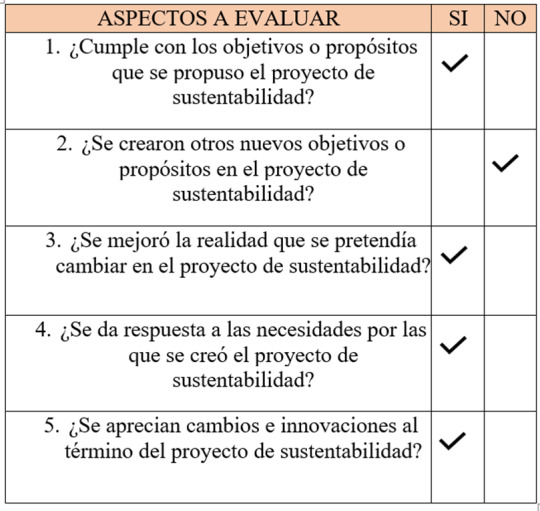
Bibliografía
CERDA Gutiérrez, Hugo. (2001) Cómo elaborar proyectos. Diseño, ejecución y evaluación de proyectos sociales y educativos. Cooperativa Editorial Magisterio, Bogotá. Pp. 84.
https://upnsaltillo.com.mx/moodle/mod/resource/view.php?id=263):
http://www.slideboom.com/presentations/647631/EXPOSICION-DE-GESTION-EQUIPO-3-(Cruz-Sanchez-Martinez
5 notes
·
View notes
Note
Bonjour ! J'ai bien suivi Les Chroniques, merci pour l'initiative. Par rapport à d'autres lectures, je préférerais soit Lupin parce que c'est des épisodes courts, soit Le fantôme de l'opéra que je connais pas. J'ai lu Dumas de mon côté déjà et c'est très sympa mais hyper long. En tout cas, si le choix est parmis Dumas ou Hugo, je vais dire Dumas parce que il peut être quand même assez marrant. Voilà mon avis personnel au sujet :)
pas besoin de te présenter tu fais partie du top 3 des lecteurs-ices les plus enthousiastes de la newsletter je reconnais ton url/pp instantanément et je suis trop contente que tu aies envie de continuer avec un autre livre
j'avais une préférence pour dumas de base parce qu'il n'a clairement pas peur d'être dramatique, drôle et pur 19ème siècle, alias la combinaison gagnante de dracula daily, mais vu les stats nombre d'abonnés/nombre d'abonnés qui sont à jour des chroniques de choderlos, le comte de monte cristo pas grand monde ne va tenir la distance et que beaucoup de gens sont déjà familiers avec les trois mousquetaires
donc je suis plutôt d'accord avec toi, je vais voir ce que les gens répondent sur substack et je vais décider rapidement
2 notes
·
View notes
Text
A Bright and Beautiful Future Awaits the Valiant
Hugo lists three ways we can react to challenges—we can just give up and succumb to them, we can hide or distance ourselves from them, or we can tackle them head-on. Our future will be dramatically different depending on the approach we take.
When a difficulty arises, some immediately give up, saying it’s too much for them. Hugo calls these people “the weak” and says that for them the future is “impossible.”
There are also those who hide from problems, trying to ignore or deny them. Hugo calls these people “the timid,” and for them the future is “unknown.” Ultimately, misfortune will await them.
And then there are others who courageously grapple with reality, refusing to be defeated. These Hugo identifies as “the thinkers” and “the valiant,” and for them, he says, the future is “ideal.” Theirs will be a bright and beautiful future.
- Daisaku Ikeda - December 15, 2023, World Tribune, pp. 2–3
0 notes
Text

…
20/11/23 - BONNIE GARMUS (AND A.S. BYATT)
' ... the air heavy with November.' (Garmus, 2022, p.135).
REFERENCE
Garmus, B. (2022) 'Lessons in chemistry'. London: Doubleday.
*****

…
TO OUR NEW YORK CORRESPONDENT FOR THE LOCATION SHOTS
FROM
THE EAST RIVER PATH

…
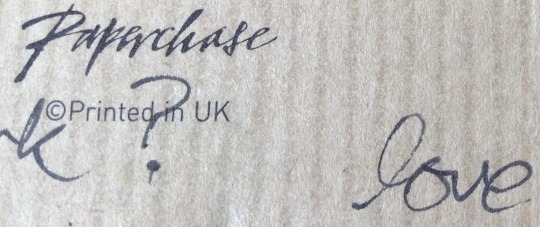
…
AND THANKS AGAIN
FROM OUR CORRESPONDENT
XXXX
SEE ALSO
' "It's about Thanksgiving." ' (Garmus, 2022, p.33).
‘What Americans call the "Holiday Season" generally begins with Thanksgiving … The first day after Thanksgiving Day—Black Friday—marks the start of the Christmas shopping season.’ (‘Thanksgiving’, 2023).
REFERENCE
‘Thanksgiving’ (2023) Wikipedia. Available at: https://en.wikipedia.org/wiki/Thanksgiving (Accessed: 20 November 2023).
STARTING EARLY IN BASINGSTOKE ON FESTIVE FRIDAY

…
ON 17th NOVEMBER

…
6 DAYS BEFORE THANKSGIVING AND 38 DAYS BEFORE CHRISTMAS
HAPPY THANKSGIVING 2023
*****
THANKSGIVING
*****
AKA FRIENDSGIVING
‘ … for people who could not or did not want to go home for the holiday.’ (‘Friendsgiving (meal)’, 2023).
REFERENCE
‘Friendsgiving (meal)’ (2023) Wikipedia. Available at: https://en.wikipedia.org/wiki/Friendsgiving_(meal) (Accessed: 20 November 2023).
AND NOW ONLY 35 DAYS TO FRIENDSMAS
*****
RIP 23

…
A.S. BYATT DIED 16/11/23
OBITUARY
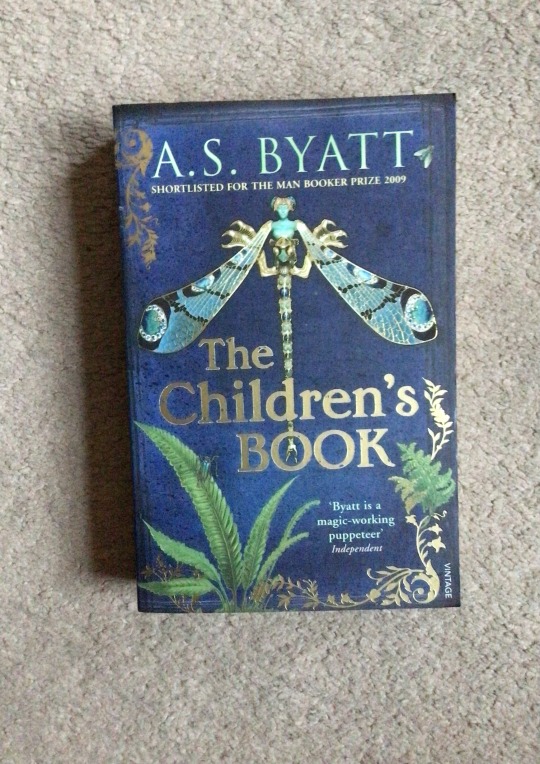
…
RIP
*****
PLUS
‘ ... while musical prodigies are always celebrated, early readers aren't. And that's because early readers are only good at something others will eventually be good at, too. So being first isn't special - it's just annoying.' (Garmus, 2022, pp.1-2).
FOR BOOK GROUP
THIS MONTH OUR MOST ANNOYING MEMBER
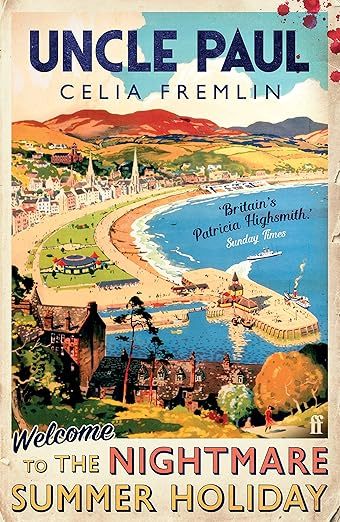
…
UNCLE PAUL
‘I have finished “Uncle Paul” by Celia Fremlin. Quite enjoyable.’
&
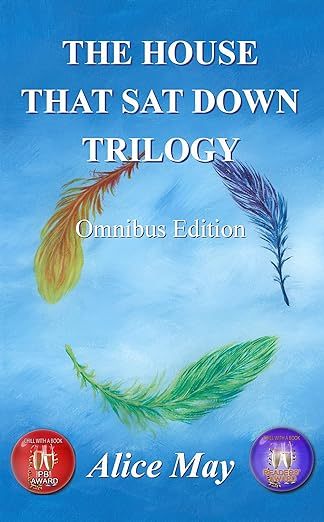
…
THE HOUSE THAT SAT DOWN
‘I have re-read “The House that Sat Down” by Alice May about a cob cottage that split apart. A true story of a cottage not too far from here and the consequences for the family. A brilliantly told story of a family’s very difficult time. Loved it just as much the second time around.’
…
OUR NEXT MOST ANNOYING READER LEADER

…
MILKMAN
‘I’m still reading Milkman, though do tend to fall asleep after a few pages. But I’m getting on - only 111 pages left. It is a remarkable book, and I can now see the humour the critics flagged up in the comments on the cover. It is certainly challenging, however!’
&
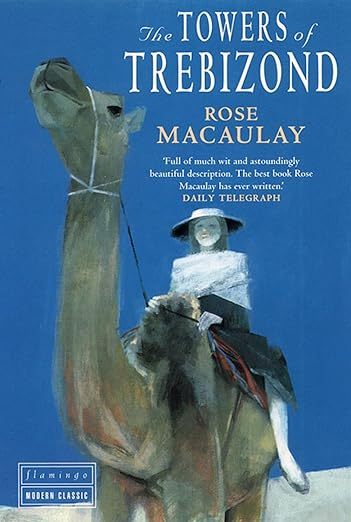
…
THE TOWERS OF TREBIZOND
‘As well as Lessons in Chemistry, I am also continuing to read The Towers of Trebizond. I read this in bed, so fall asleep reading this book too - but more legitimately. I won’t say anything. about it, as it is on our list for next year; only that is a favourite book of mine and is an easy read.’
&
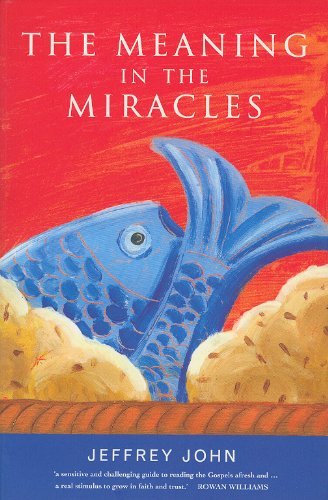
…
THE MEANING IN THE MIRACLES
‘I have put All the Light You Cannot See on hold as I can’t read more than three fiction books at the same time, but have started reading The Meaning in the Miracles by Jeffrey John which gives a new slant on the miracles attributed to Jesus.’
…
OUR NOT SO ANNOYING MEMBERS
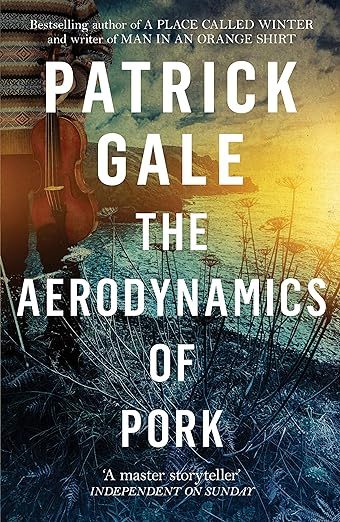
…
THE AERODYNAMICS OF PORK
‘I finished the Patrick Gale …………? Pork.’
&
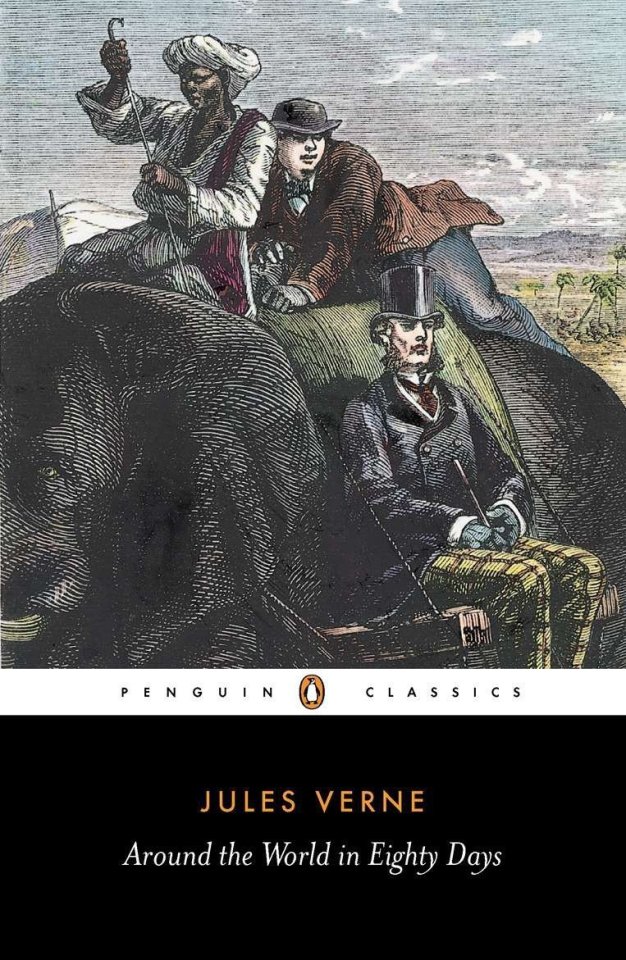
…
AROUND THE WORLD IN EIGHTY DAYS
‘ … am onto the Jules Verne now.’
WHILST THE OTHER HALF
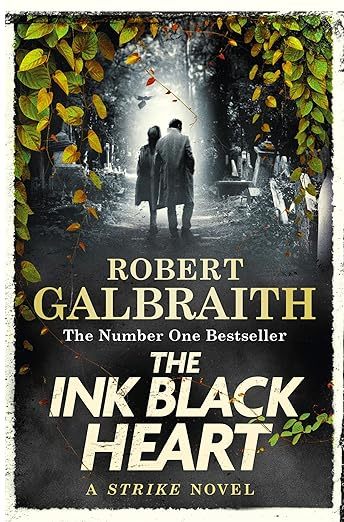
…
THE INK BLACK HEART
‘ … has finished the Galbraith and is onto Agent Zizag by Ben McIntrye, which I read a few months ago.’

…
AGENT ZIGZAG
…
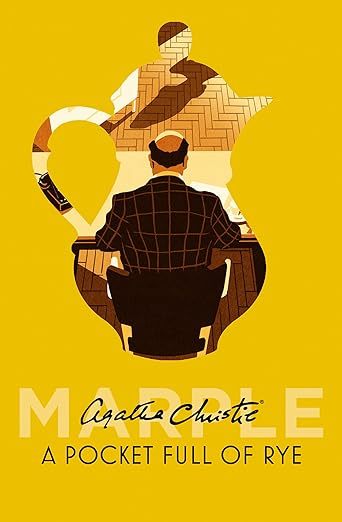
…
A POCKET FULL OF RYE
‘This year I bought a Miss Marple calendar and discovered that there are twelve Miss Marple books. I have been reading one a month.’
…
OUR LEAST ANNOYING MEMBER
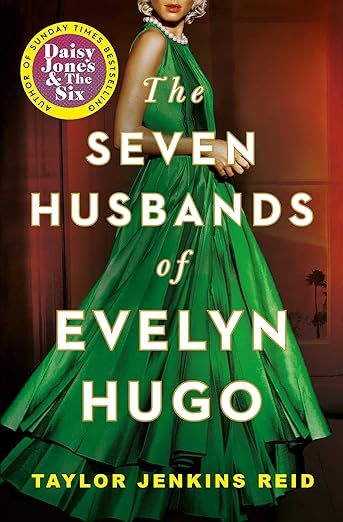
…
THE SEVEN HUSBANDS OF EVELYN HUGO
'I’ve just read The Seven Husbands of Evelyn Hugo by Taylor Jenkins Reid. I enjoyed it but it is quite complex on several different levels. It has been quoted as being based on the fact that Elizabeth Taylor married several times, but the basic thread is that the heroine is gay, so that several of her marriages were to gay men so that both partners in these marriages could have secret gay relationships. There were other threads, the heroine becomes an acclaimed film star and there is quite a lot about the film world.’
…
AND OUR NOT AT ALL ANNOYING MEMBER
‘No other reading from me this month I am afraid. At least nothing worthy of note.’
*****
BOOK GROUP
*****
QUOTE OF THE WEEK 2011 - 2023

…
12 EPIC YEARS
FROM THE ARCHIVE

…
28/11/22
*****
0 notes
Text
Referensi Rough Draft
Gardini, G. L., & Lambert, P. (Eds.). (2011). Latin American foreign policies: between ideology and pragmatism (Vol. 201, No. 1). New York: Palgrave Macmillan.
Hellinger, D. C. (2015). Comparative politics of Latin America: Democracy at last?. Routledge.
Rojas, R. (2017). The ebbing “pink tide”: An autopsy of left-wing regimes in Latin America. In New Labor Forum (Vol. 26, No. 2, pp. 70-82). Sage CA: Los Angeles, CA: SAGE Publications.
Tricontinental. (2023). The Strategic Revolutionary Thought and Legacy of Hugo Chavez Ten Years After His Death. Tricontinental: Institute for Social Research.
Usman, R. P. P., Putra, M. R. S., & Lie, G. (2023). Analyzing the Economic Crisis in Venezuela: Causes, Effects, and Solutions. QISTINA: Jurnal Multidisiplin Indonesia, 2(1), 631-636.
0 notes
Photo

CAE DORADOS EN GRAN BATALLA DE 12 ENTRADAS
Chihuahua, Chih.- Los Dorados de Chihuahua estaban a un out de volver al liderato, pero Alejandro “El Indio” Flores lo impidió; conectó cuadrangular como emergente en la novena entrada, para empatar la pizarra y al final Manzaneros de Cuauhtémoc se impuso 9-8 en 12 entradas, este viernes en la séptima jornada de la LEB-Mexbet 2023.
Fue un gran partido, donde ambos equipos lucharon de principio a fin por la victoria, justo cuando la temporada ha cumplido su segunda tercera parte de acción.
Dorados amaneció con marca de 15-5, todavía como sublíder y dejó ir la oportunidad de regresar a la cima, ya que Indios (16–4) perdió en Juárez ante Mazorqueros de Camargo; Manzaneros igualó su récord en 10-10.

Los capitalinos llegaron arriba 7-6 a la última entrada, parecía que saldrían la victoria, porque Mario Rodríguez el líder de PCL del evento, estaba haciendo un gran relevo, pero “El Indio” Flores, le compró el primer picheo para pegar cuadrangular por el jardín izquierdo y empatar la pizarra.

Antes Manzaneros había tenido ventajas de 4-0 y 6-2, esta última se vio superada en la fatídica séptima entrada, donde Dorados con tres vueltas se fue adelante 7-6, ahí destacó sencillo productor de dos carreras del emergente Alonso Ronquillo.
Dicen que caballo que alcanza gana y así sucedió, luego del cuadrangular de Flores, Manzaneros timbró en dos ocasiones en la apertura de la doceava tanda para mover la pizarra 9-7.
La carrera del despeje la anotó Víctor Hugo Chávez en wild pitch y la que a la postre marcó la diferencia cayó en los spikes de Octavio Armendáriz; tanto Víctor Hugo como Armendáriz habían pegado de hit.

Dorados siguió peleando, en el cierre doble de Rafa González y sencillo producir de Sergio Nájera puso el marcador 9-8, aunque la batalla terminó cuando el seis veces campeón estatal, Daniel Valdez abanicó a Ulises Villa con hombres en primera y segunda base.
Ganó Alberto Herrera y perdió Lucas Alejandro ambos en labor de relevo.
La serie se define este sábado a partir de las siete de la tarde, en el gran estadio Cuauhtémoc, el joven de 20 años Ramón Carrasco va por su tercera victoria en fila, su rival del montículo será el zurdo Iván Hernández.
C H E
Manzaneros 9 15 3
Dorados 8 15 3
PG.- Alberto Herrera (2-0-2)
PP.- Lucas Alejandro (0-1)
JS.- Daniel Valdez (1)

Mejores bats por Chihuahua:
Adrián Saucedo 6-3 con doble
Ramón Valdez 3-2
Sergio Nájera 6-2 con doble
Marco Manjarrez 6-2
Mejores bats por Manzaneros:
Octavio Armendáriz 6-3
Yousamot Cota 6-3
Alejandro Flores 2-1 con HR (1)
(Prensa Dorados)
0 notes
Text
Construcción del modelo de seguimiento y del plan de evaluación.
El proyecto Sembrando Vida fue una iniciativa que buscó promover la sustentabilidad ambiental y el desarrollo económico en comunidades rurales a través de la reforestación y producción agroforestal.
El programa fue lanzado oficialmente en 2019 bajo la administración del presidente Andrés Manuel López Obrador. Desde su inicio, Sembrando Vida buscó reforestar áreas afectadas por la deforestación y fomentar un desarrollo rural integral a través de capacitaciones, apoyo económico y recursos técnicos para los agricultores participantes.
Para fines ilustrativos, supongamos que el término del proyecto se estableció en 2022 después de tres años desde su implementación. Durante este tiempo, Sembrando Vida logró generar impactos significativos tanto a nivel ambiental como social y económico al trabajar con miles de agricultores(as) en distintas regiones del país.
Durante este tiempo, se lograron importantes mejoras en el entorno social de los involucrados. Se crearon empleos directos e indirectos relacionados con la producción agroforestal y la gestión forestal sostenible, lo cual contribuyó al desarrollo económico local. Además, los participantes adquirieron habilidades técnicas y prácticas para fomentar una agricultura más sostenible y eficiente.
Se sugiere hacer las siguientes recomendaciones a las diferentes autoridades según sea el caso:
A las autoridades educativas: Incorporar programas enfocados en educación ambiental dentro del sistema escolar para crear conciencia sobre la importancia de preservar nuestro medio ambiente.
A las empresas: Promover políticas empresariales amigables con el medio ambiente como uso eficiente de recursos naturales, así como también implementaciones tecnológicas no contaminantes
A los municipios: Establecer incentivos fiscales para las empresas que adopten prácticas más sostenibles o realicen proyectos similares al Sembrando Vida.
Al gobierno estatal: Promulgar leyes que estimulen una economía verde mediante mecanismos financieros adecuados (por ejemplo, bonificación fiscal) destinado exclusivamente a actividades afines dentro del marco ambientalmente responsable.
Al Presidente de la República: Crear un programa nacional de desarrollo sostenible para promover iniciativas similares a Sembrando Vida en todo el país.
Como estudiante, esperaría que las autoridades educativas, instituciones, empresas, municipales, gobiernos del Estado y el presidente de la república prioricen políticas y acciones concretas enfocadas al cuidado ambiental. Además, se espera una mayor inversión en proyectos verdes como Sembrando Vida para asegurar una vida más saludable y equitativa tanto ahora como para las futuras generaciones.
En conclusión, los resultados obtenidos muestran que proyectos como Sembrando Vida pueden ser altamente efectivos en promover la sustentabilidad ambiental y mejorar la calidad de vida en comunidades rurales. Se recomienda a todas las autoridades correspondientes considerar este tipo de proyecto e implementar estrategias similares o complementarias para lograr un impacto aún mayor dentro del contexto socio-ambiental actual.
Como sabemos un proyecto bien diseñado y estructurado junto con una evaluación rigurosa es fundamental para lograr cambios positivos duraderos en proyectos de sustentabilidad ambiental como Sembrando Vida. A través de la correcta formulación del proyecto se pueden obtener tanto el financiamiento necesario como la confianza necesaria por parte de todos los actores involucrados (gubernamentales o no) al cumplir con sus objetivos específicos medibles propuestos inicialmente.

Referencias Bibliográficas: CERDA Gutiérrez, Hugo. (2001). Cómo elaborar proyectos. Diseño, ejecución y evaluación de proyectos sociales y educativos. Cooperativa Editorial Magisterio, Bogotá. Pp. 84.
0 notes
Text
Hugo Morán: "La propuesta del PP y Vox para los regadíos de Doñana es una aberración"
Hugo Morán: “La propuesta del PP y Vox para los regadíos de Doñana es una aberración”
— Leer en www.lavanguardia.com/natural/20230413/8890532/hugo-moran-plan-pp-vox-legalizar-regadios-donana-aberracion.amp.html
View On WordPress
0 notes